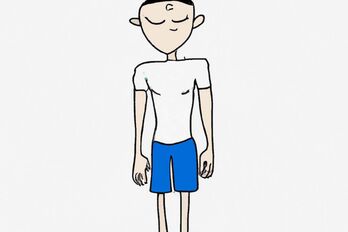How to Prevent Ingrown Whiskers
How to Prevent Ingrown Whiskers When Shaving Your Face: A Comprehensive Guide for Men
Shaving is a daily or weekly ritual for many men, but it can sometimes lead to an irritating and unsightly problem: ingrown hairs, also known as ingrown whiskers. These occur when facial hairs curl back into the skin or grow sideways, causing red bumps, inflammation, and sometimes even infection. For men, particularly those with curly or coarse hair, this is a common issue that can lead to discomfort, blemishes, and frustration.
Preventing ingrown whiskers while shaving is possible with the right techniques, tools, and skincare routine. In this guide, we'll cover everything you need to know to avoid ingrown hairs and maintain smooth, healthy skin.
1. Understand Why Ingrown Whiskers Happen.
Before diving into prevention techniques, it's important to understand why ingrown whiskers occur. In general, they happen when:
- - Hair curls back into the skin: This is more common for men with curly or coarse hair. When the hair grows back after being cut, it sometimes doesn’t exit the follicle properly and instead grows sideways or backward into the skin.
- - Improper shaving technique: Shaving too closely, using dull blades, or shaving against the grain can irritate the skin and cause ingrown hairs.
- - Blocked hair follicles: Dead skin cells, oils, and dirt can clog pores, trapping hair inside the follicle and causing it to grow inward.
- - Over-shaving: Shaving too frequently or pressing too hard on the skin can cause tiny cuts and inflammation, increasing the likelihood of ingrown hairs.
Understanding these factors helps you adjust your shaving habits and skincare routine to minimize the chances of ingrown hairs.
2. Exfoliate Regularly
Exfoliating your skin is one of the best ways to prevent ingrown whiskers. By removing dead skin cells and unclogging pores, you create a clear path for hairs to grow out of the skin. Regular exfoliation also smooths out rough patches, making your shaving experience easier and more comfortable.
- Use a gentle exfoliator: Choose a facial scrub specifically designed for men or sensitive skin. Look for ingredients like salicylic acid, which can help prevent ingrown hairs by keeping pores clear and reducing inflammation.
- Exfoliate 2-3 times per week: Over-exfoliating can irritate the skin, so find a balance that works for you. If your skin becomes red or sensitive, scale back the frequency.
- Focus on trouble spots: Pay extra attention to areas where ingrown hairs are common, such as the neck, chin, and jawline.
3. Soften Your Facial Hair Before Shaving
- Dry or stiff facial hair is harder to cut and more likely to cause irritation, increasing the chances of ingrown whiskers. Softening your whiskers before shaving makes them easier to trim and helps avoid pulling or tugging on the hair.
- Use warm water: Shave after a hot shower, or apply a warm, damp towel to your face for a few minutes before shaving. The heat and moisture will open your pores and soften the hair, making it easier to shave.
- Choose the right shaving cream: Use a shaving cream or gel that hydrates your skin and softens the hair. Avoid products with harsh chemicals or alcohol, as they can dry out your skin. Look for options with soothing ingredients like aloe vera, glycerin, or coconut oil.
4. Use the Right Razor
The type of razor you use plays a major role in preventing ingrown whiskers. Different razors have different effects on your skin and hair follicles, so it's important to choose one that suits your skin type and hair texture.
Opt for a single-blade razor: Multi-blade razors can shave too close to the skin, increasing the risk of hair getting trapped inside the follicle. Single-blade razors, such as safety razors, allow for a clean shave without causing excessive irritation.
- Keep your razor sharp: Dull blades pull on the hair and damage the skin, leading to ingrown hairs. Change your blades frequently—ideally after 5-10 shaves, depending on the thickness of your hair.
- Use an electric razor for a less close shave: If you're particularly prone to ingrown whiskers, an electric razor may be a better option. These razors don't shave as close to the skin as traditional blades, reducing the likelihood of hair becoming trapped.
5. Shave in the Direction of Hair Growth
Shaving against the grain (the direction your hair naturally grows) might give you a closer shave, but it also increases the chances of cutting the hair too short, causing it to curl back into the skin. Instead, always shave in the direction of hair growth to minimize irritation and reduce the risk of ingrown whiskers.
- Map out your facial hair growth: The direction your hair grows can vary across different areas of your face. Spend some time observing which way your whiskers grow in specific areas like the neck, chin, and cheeks, then shave accordingly.
- Take short, light strokes: Avoid pressing too hard with the razor. Light, short strokes will reduce skin irritation and give you more control while shaving.
6. Avoid Shaving Too Closely
While a close shave might feel smoother, it's one of the primary culprits for ingrown hairs. Shaving too closely can cut the hair below the skin's surface, making it easier for the hair to become trapped inside the follicle.
- Use minimal pressure: Don’t press down too hard on the razor. Instead, let the blade glide gently across your skin.
- Consider leaving a bit of stubble: You don’t need to shave down to the skin. Leaving a tiny amount of stubble can help prevent hairs from curling back into the skin.
7. Rinse and Moisturize After Shaving
Once you're finished shaving, it's important to care for your skin to reduce inflammation and keep it healthy.
- Rinse with cold water: Splash your face with cold water after shaving to close the pores and reduce irritation.
- Apply an alcohol-free aftershave: Many aftershaves contain alcohol, which can dry out and irritate the skin. Instead, choose an alcohol-free aftershave or balm with soothing ingredients like witch hazel, tea tree oil, or aloe vera.
- Moisturize: Hydrating your skin after shaving is essential for keeping it soft and preventing irritation. Use a moisturizer designed for men, preferably one with calming ingredients like shea butter or hyaluronic acid.
8. Treat Ingrown Whiskers Immediately
If you do end up with ingrown whiskers, it's important to treat them properly to avoid infection or scarring.
- Don't pick or squeeze: It can be tempting, but picking at ingrown hairs can lead to infection and scarring. Instead, gently exfoliate the area to help release the trapped hair.
- Use a warm compress: Apply a warm, damp cloth to the ingrown hair for a few minutes to help soften the skin and hair.
- Apply an over-the-counter product: Look for creams or serums with salicylic acid or glycolic acid to help reduce inflammation and exfoliate the area. Hydrocortisone creams can also reduce redness and swelling.
- Consult a dermatologist if necessary: If the ingrown hair becomes infected or doesn’t improve, see a dermatologist for professional treatment.
9. Adjust Your Routine as Needed
Preventing ingrown whiskers is a matter of finding what works best for your skin and hair type. If you notice that certain products or techniques consistently cause ingrown hairs, adjust your routine. Everyone’s skin is different, so it may take some experimentation to find the right combination of products and methods.
By following these tips, you can drastically reduce the chances of developing ingrown whiskers and enjoy a smooth, irritation-free shave. Taking care of your skin before, during, and after shaving is key to maintaining healthy facial hair and avoiding the discomfort of ingrown hairs.





